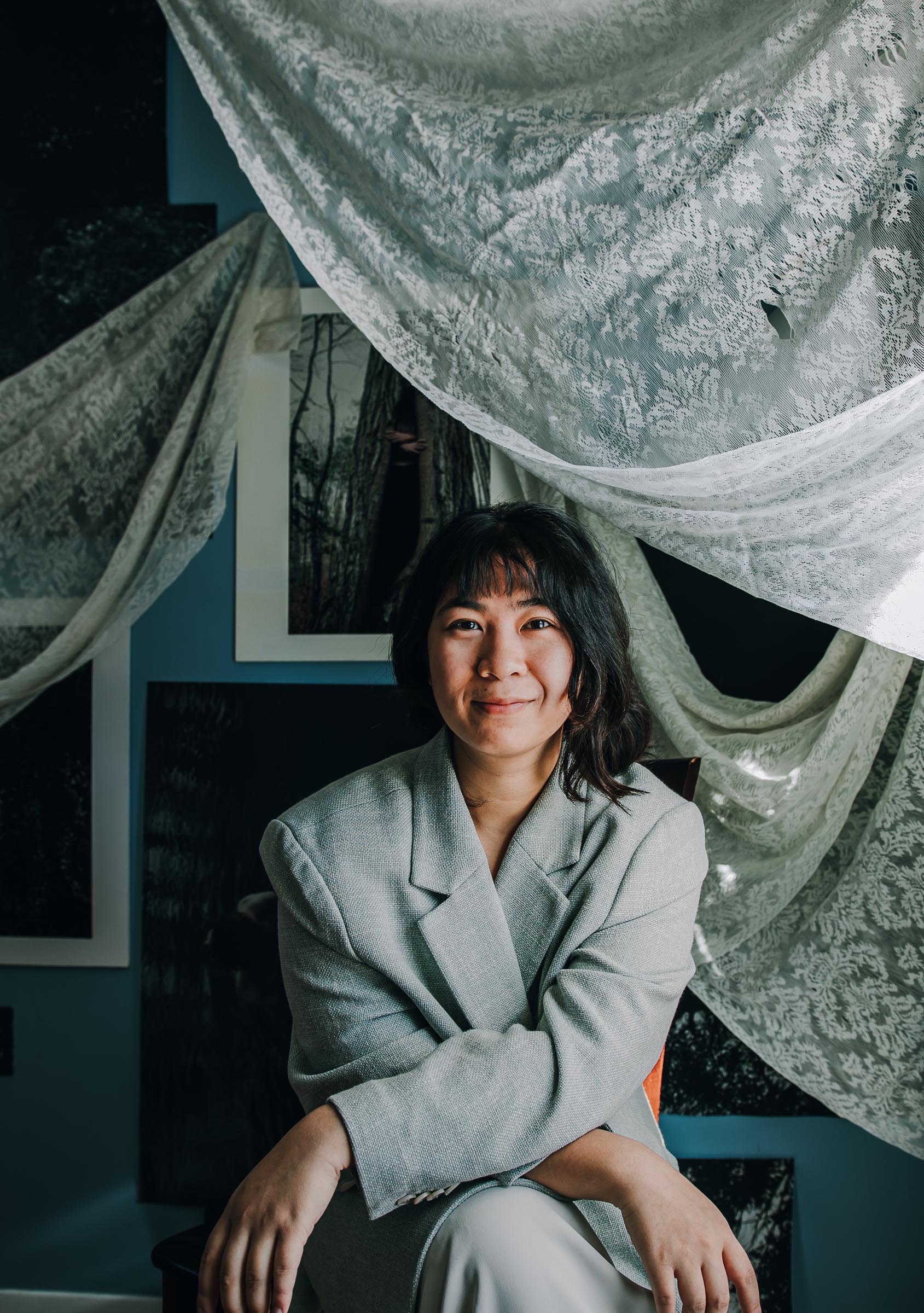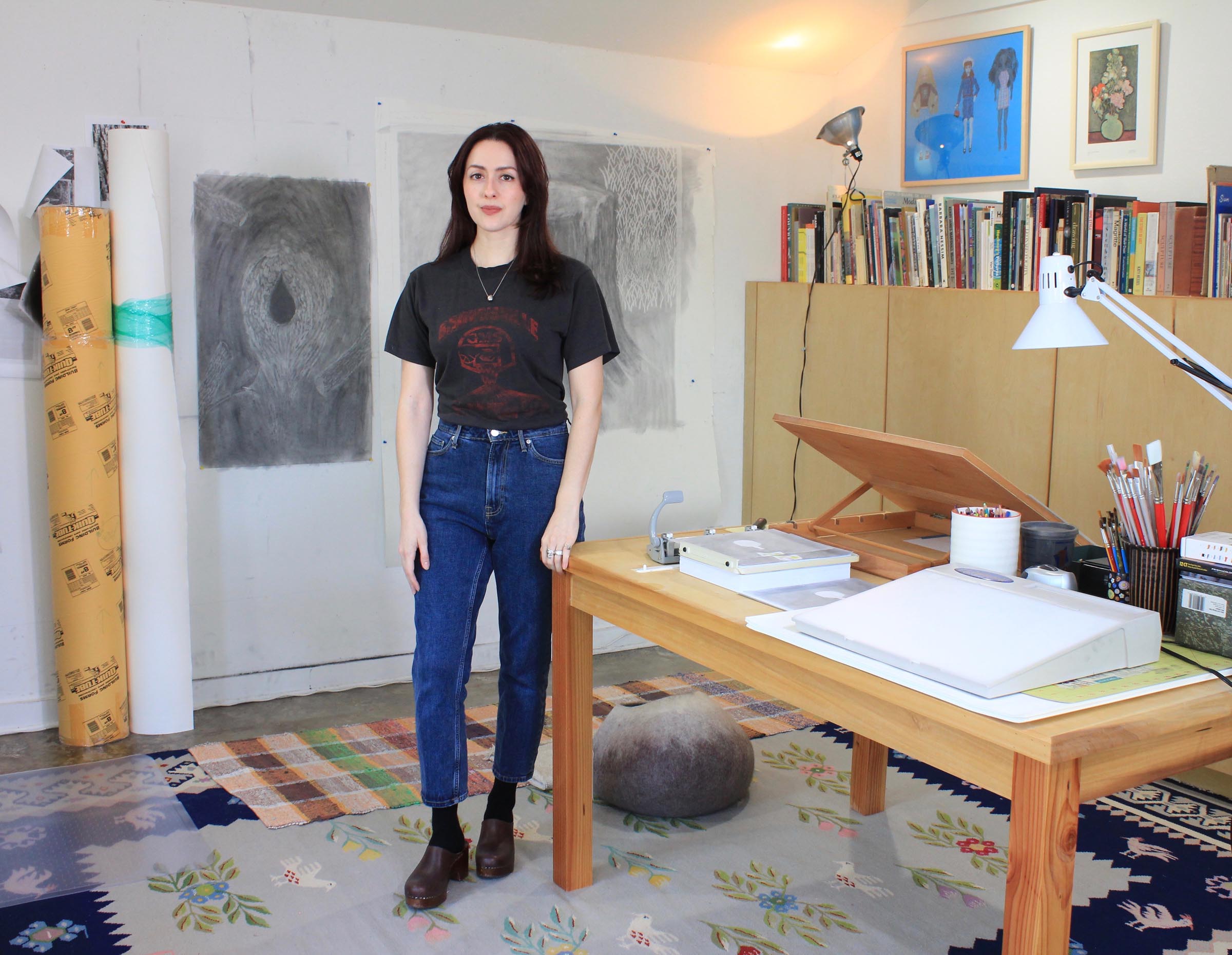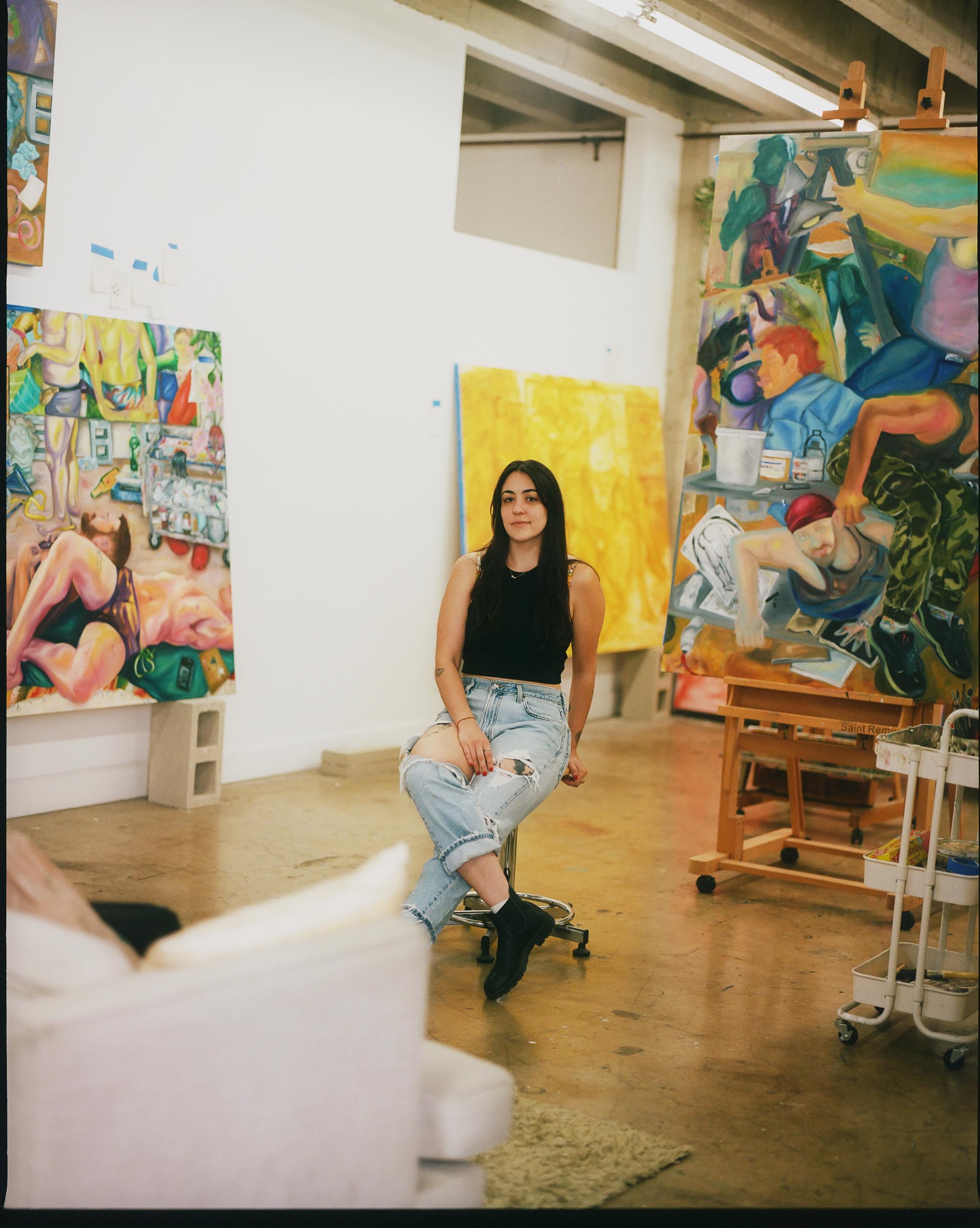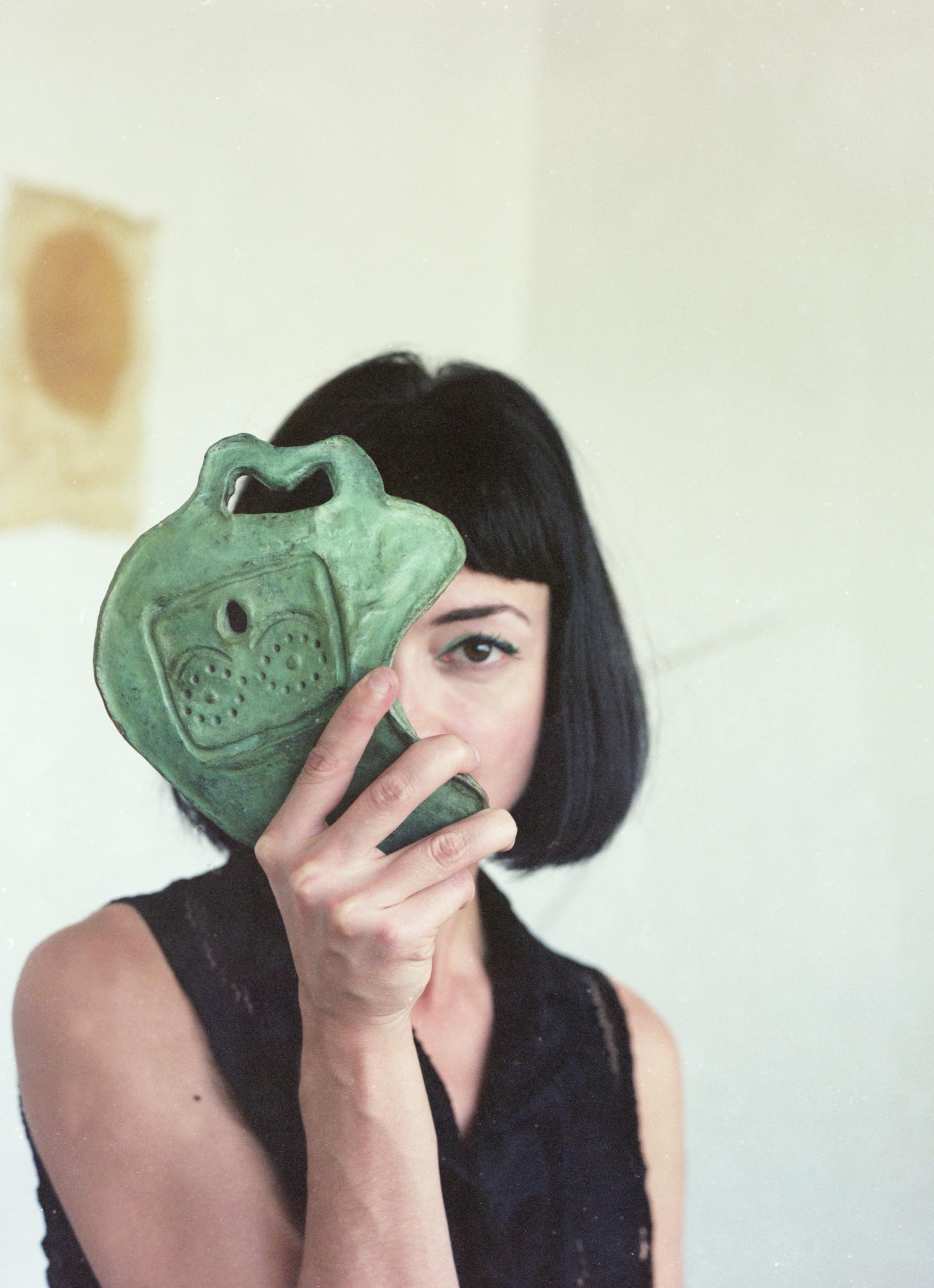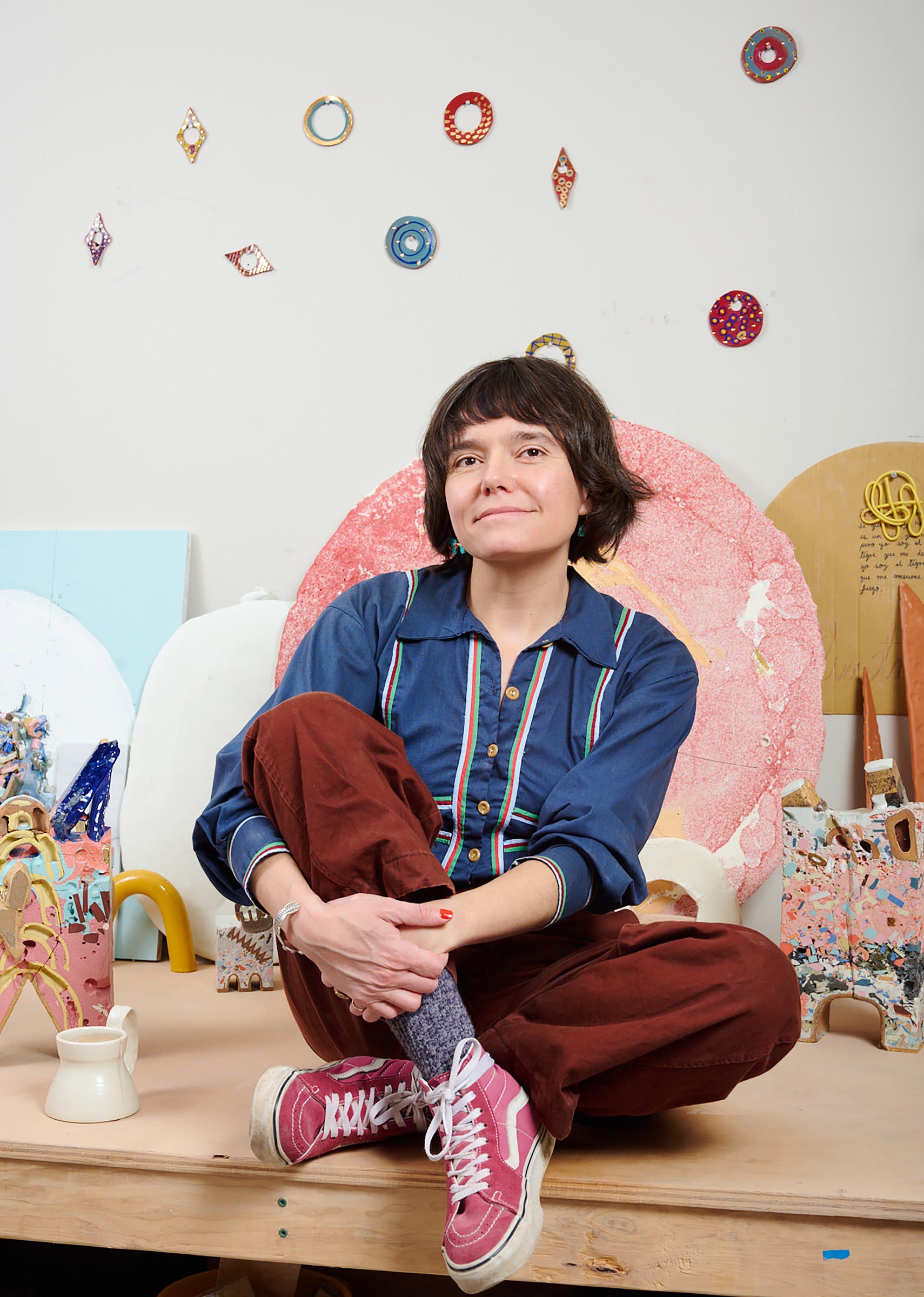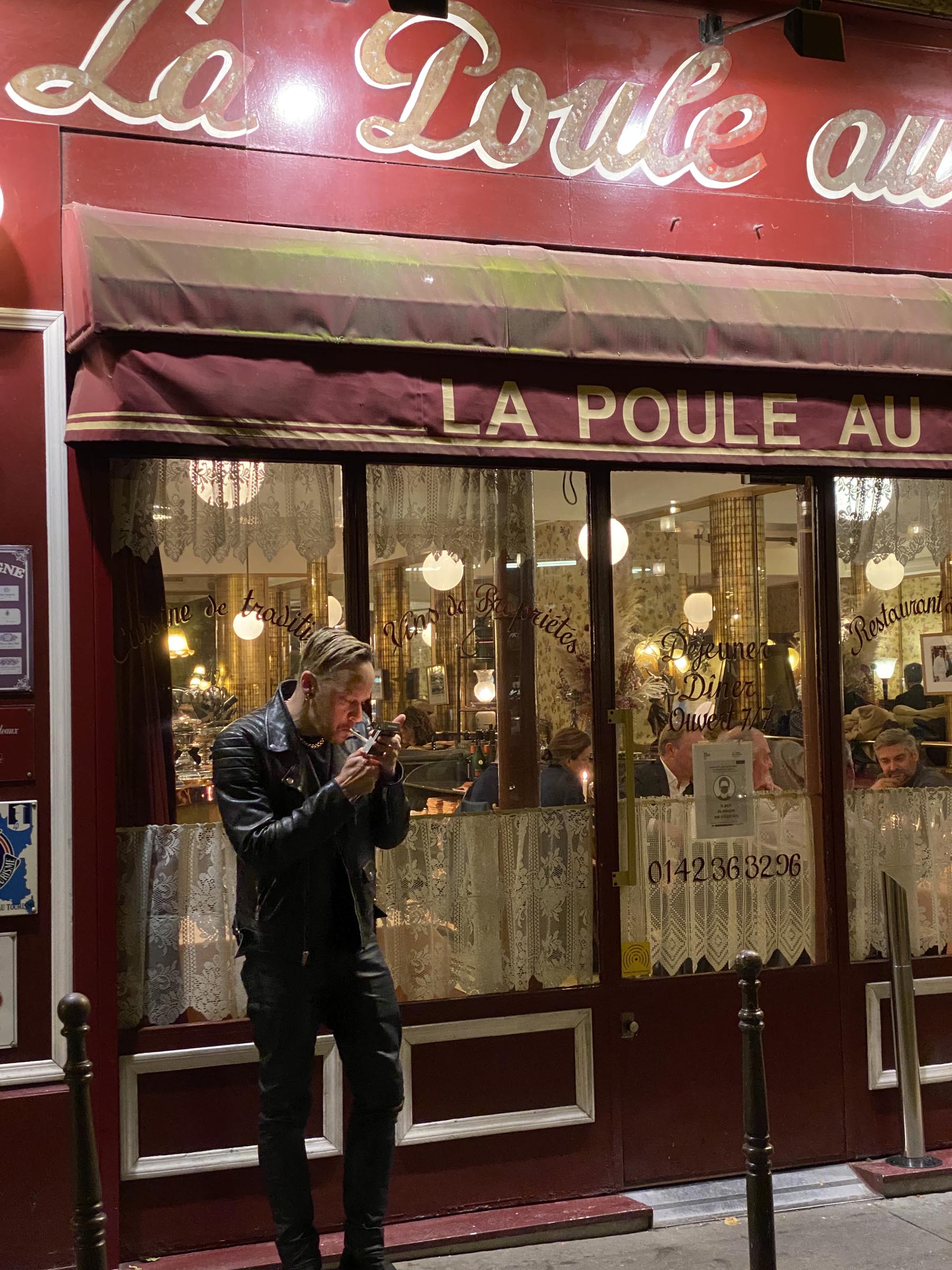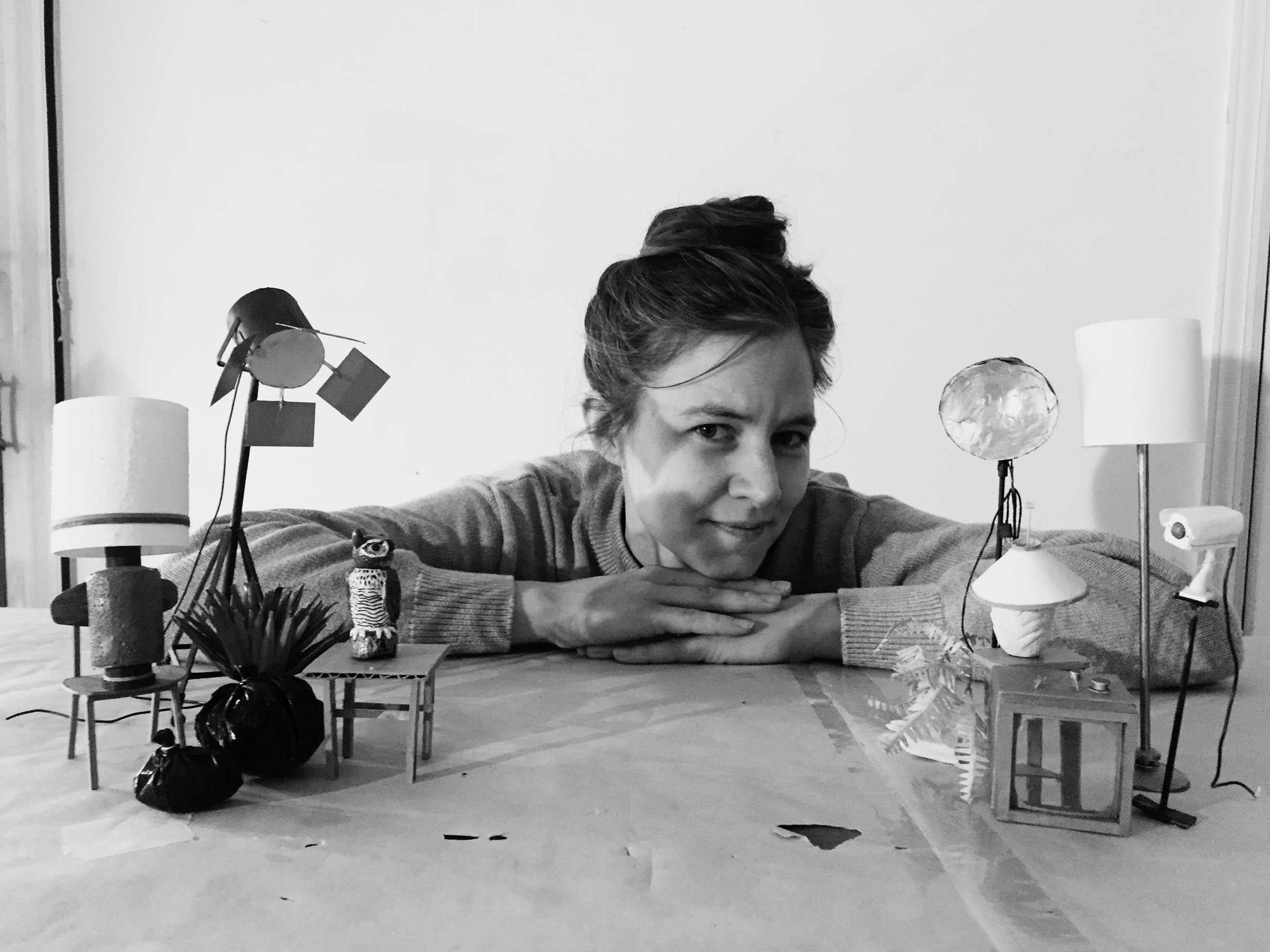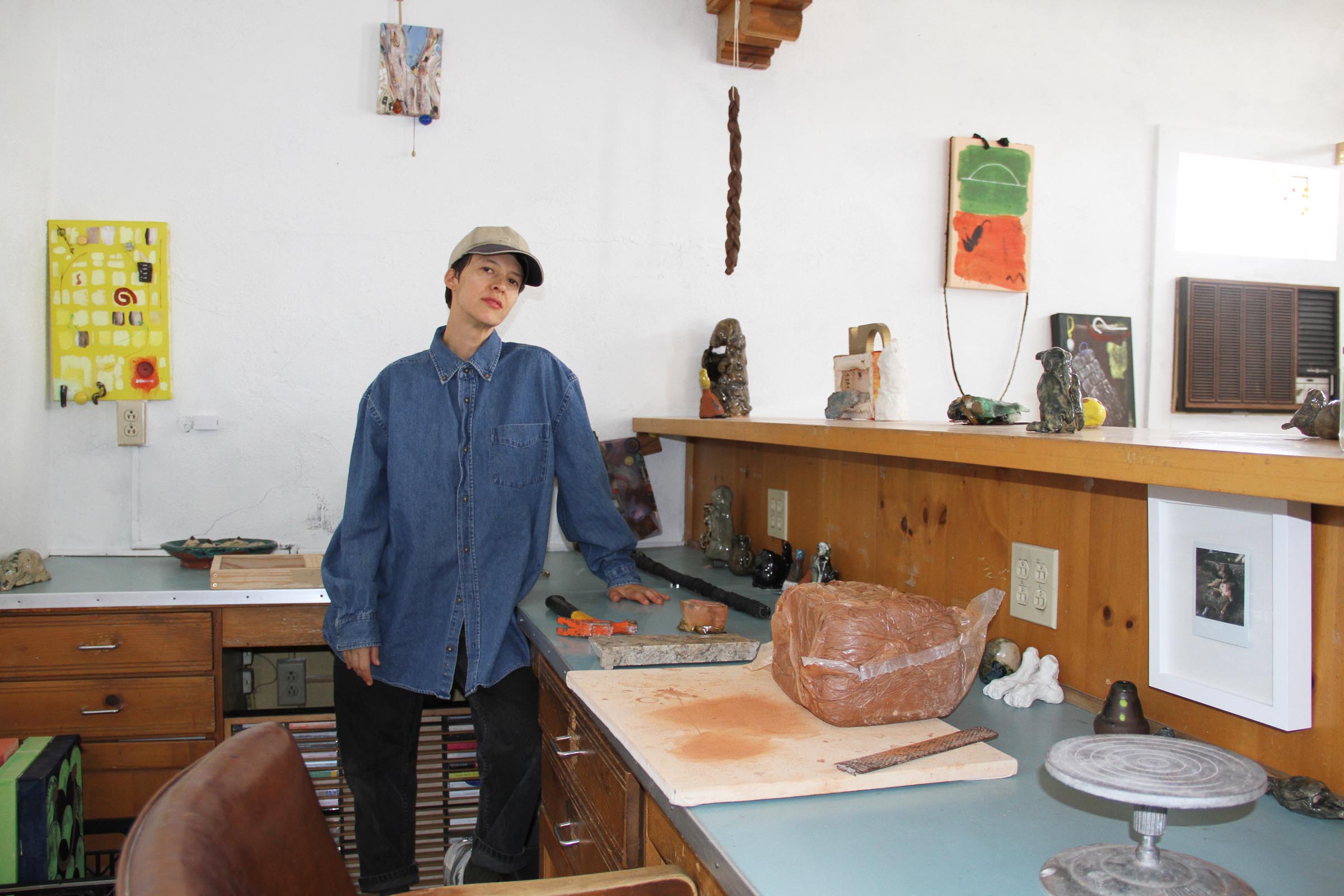How did you get into making art?
I have always had an overactive imagination, and I dream a lot. There are far more ideas swirling in my mind than I will ever be able to translate into art. I was home-schooled as a child and I used to draw all the time. It was a wonderful experience, and gave me the opportunity to prioritise art over more conventional academic subjects from an early age.
I went to Glasgow School of Art to study Painting and Printmaking as a degree, which has led me to the prints I make today. I especially loved the duality of this specialised degree, pairing the spontaneity of painting with the technicality of print. Although I haven’t painted since my graduation in 2018, I am always drawn to printmaking techniques which reflect the liveliness and immediacy of painting.

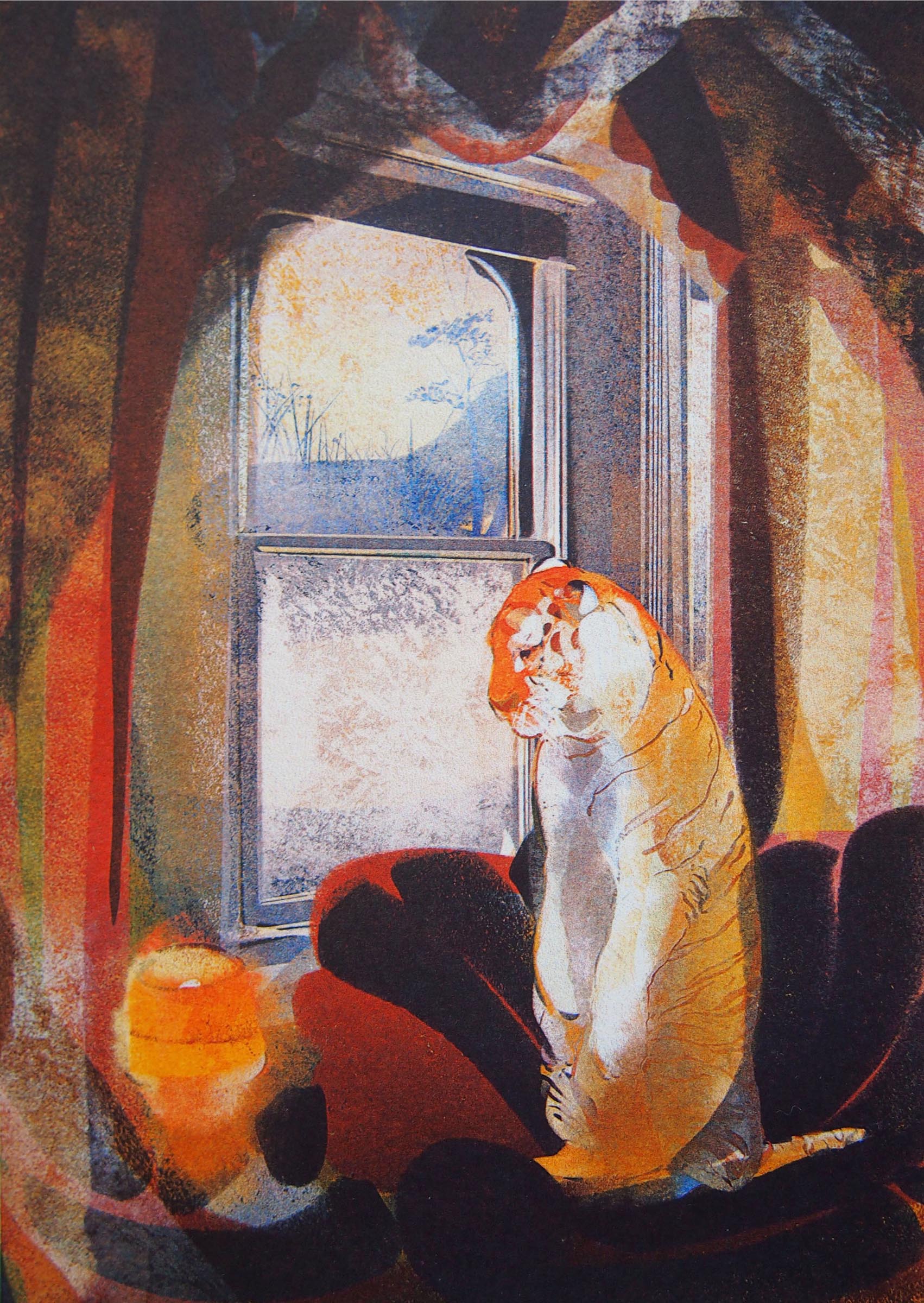
What are you currently working on?
At the moment I am particularly interested in the interplay between modern, mechanised forms of print production and their traditional, hands-on counterparts. For example, I love the textural similarity between stone lithography and risography. Whilst they are wildly different processes, the fine dither-dots produced by the riso stencil make a textural pattern similar to the rich grain found in litho stones. The natural translucency of riso ink also compliments the delicate potential of lithography’s liquid tusche. My knowledge of each process is assisting how I interpret colour and pattern across both techniques, strengthening my capabilities in each medium. By highlighting the affinity they share, I aim to bridge the divide between conventional and more accessible, contemporary printmaking techniques.

I am particularly interested in the interplay between modern, mechanized forms of print production and their traditional, hands-on counterparts.
Georgia Green

What inspired you to get started on this body of work?
My knowledge of classical printmaking has always strongly informed my mark-making processes. However, accessibility and environmental sustainability have become a top priority for me as a printmaker and arts facilitator in recent years. Printmaking is simultaneously wonderfully innovative and frustratingly inaccessible. This is largely due to the specialised facilities required to make both traditional and contemporary print. Print studios are fantastic resources for artists such as myself, and non-toxic print practices are becoming more commonplace. However, studio fees are often expensive, with limited space or long waiting lists for artists looking to become key-holder members. I often have to travel in order to access specialised printmaking facilities, which I am fortunate enough to be able to do. But for many artists and communities these barriers are massively prohibitive.
As an artist I firmly believe art should be accessible for all, and I have made community engagement a big part of my printmaking practice. Since April 2022 I have been working as a printmaking technician and arts facilitator at The Art Station, a charity supporting creative outreach in rural East Anglia. I teach risograph printing and editioning to children between the age of four and sixteen, as well as running more complex workshops for adults, inductions and open-access sessions. I often work in collaboration with professional artists to edition their designs during our open-access classes, which I find very rewarding. Risography is a mechanised form of stencil printing with a more climate conscious appeal than its traditional or digital counterparts. It is a perfect example of innovative, sustainable and affordable printmaking. My work with The Art Station has directly fed into the my current explorations in print.


Do you work on distinct projects or do you take a broader approach to your practice?
As my work is often influenced by the printmaking facilities I happen to have access to at any given time, it is usually project-based. I find artists residencies are a particularly valuable resource in this respect. Each residency is an opportunity to explore an intense period of creativity over a specific timeframe, usually one to three months. For example, I was the recipient of the East London Printmakers’ Studio Bursary Award, a three month residency with a financial stipend enabling me to explore large-scale CMYK screenprinting for the first time. At the end of last year I undertook a month-long residency at Aga Lab in Amsterdam researching non-toxic stone lithography. This was the longest I have had access to a lithography studio since my graduation, and I am excited to return for another residency there this summer.

What’s a typical day like in your studio?
My working pattern is often idiosyncratic as I use communal print studio spaces rather than having my own studio. For example, each month I spend three to four days facilitating workshops at The Art Station as their printmaking technician. The classes and one-to-one sessions I have with artists take up five or six hours a day, so I have plenty of time to print my own editions on either side. I like working late as my energy levels are highest in the evenings, so I might stick around until 11pm or midnight making work. Risography is incredibly fast, so I can make multiple editions per hour if I get my designs right.
The design stage soaks up a lot of my time. Almost all my prints start organically as chalk and pastel sketches. I carry an A5 or A6 sketchbook with me everywhere filled with thoughts, visual observations and designs. These little compositions are then worked up into larger designs digitally, allowing me to easily separate the colour layers for my finished prints. Being able to work digitally can be an absolute lifesaver as I have my entire design ‘studio’ contained within one easily transportable device. This is great for residencies, and enables me to work on my prints at home.


Who are your favorite artists?
I went to a gorgeously curated Tate Modern exhibition on Cezanne back in 2022. This is the first thing that popped into my head reading the question, and I still think about it all the time. Seeing his work in real life gave me a new appreciation for his dazzling use of colour. There’s something jewel-like about his paintings that had me mesmerised room after room. I really wasn’t expecting to be so charmed, which made it extra special.
Speaking more broadly, the slightly surreal scenes I depict in my prints are influenced by a wide range of visual and written material, often including a solitary figure or animal as a narrative cue. I collect inspiration from children’s book illustrations, novels, poetry, frescoes, architecture and interior design. Recently I developed a series of risograph prints inspired by a visit to Kettle’s Yard, a peculiar and tranquil art gallery in Cambridge. Another edition was inspired by Virginia Woolf’s novel Orlando. Sometimes I’ll combine characters lifted directly or influenced by films or literature with interiors from my everyday life. I watched a lot of Studio Ghibli as a kid, and I have always been drawn to the hidden symbolism or dualism found in the animals, dwellings and characters from these beautiful films. Nothing is quite as it seems in the vivid, nature-saturated scenes of Princess Mononoke, My Neighbour Totoro or Spirited Away. While my artistic style remains very different, I definitely feel the anthropomorphic animals sitting and sleeping in my designs relate in part to my love of these Studio Ghibli productions.
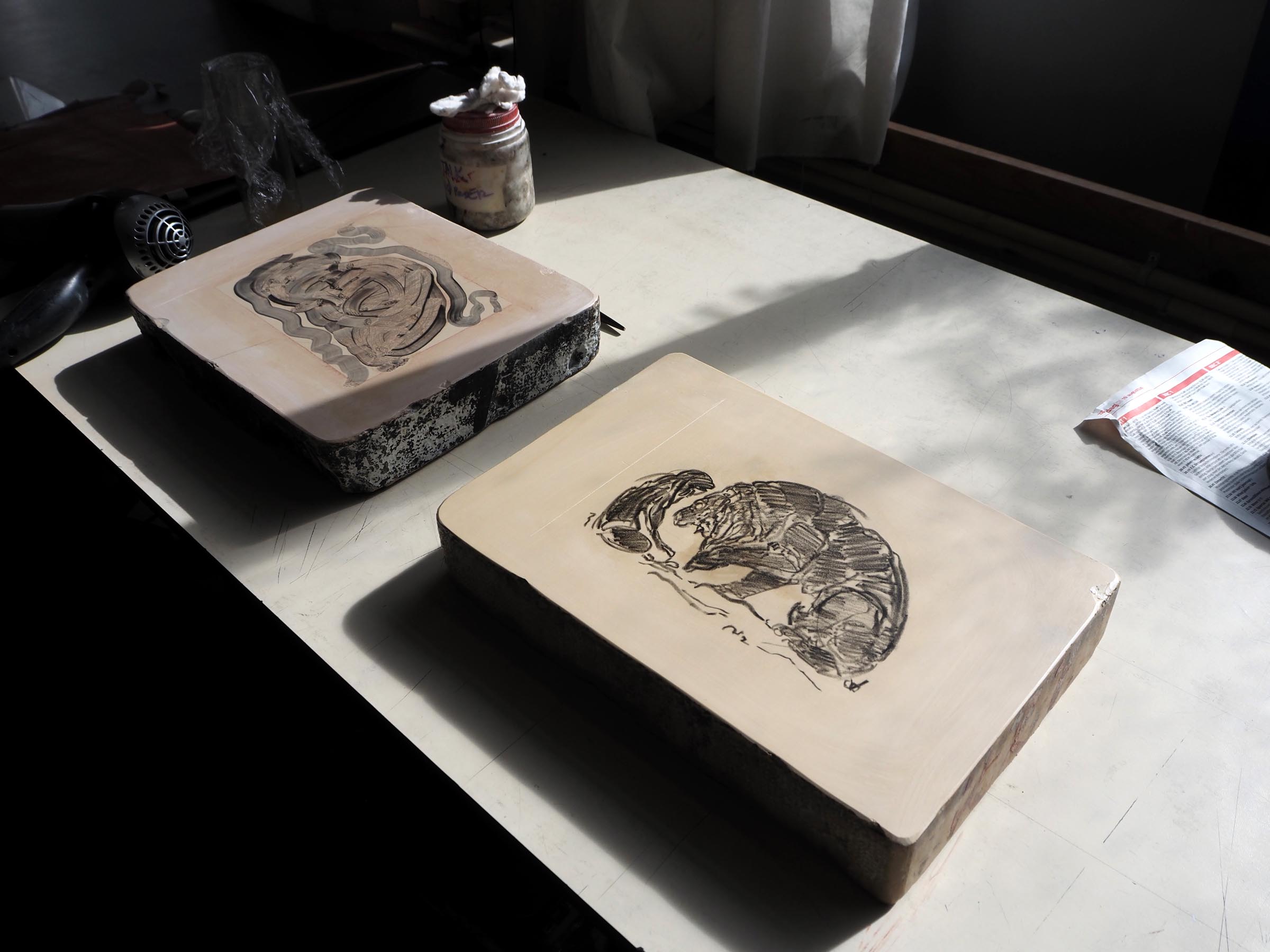
Where do you go to discover new artists?
As a printmaker I take part in lots of print-specific open call exhibitions such as Woolwich Contemporary Print Fair in London. These are fantastic, accessible platforms for networking, and they give me an opportunity to explore contemporary print in all its forms first-hand. I have come across many of the artists and galleries I follow on instagram this way, and I like the tangibility of discovering new artists in such a setting.
Print studios in themselves are very cooperative spaces used by a large number of artists. As a result I often discover new artists and interesting approaches to printmaking organically when I am working new studios as a key-holder, technician or artist in residence.
Learn more about the artist by visiting the following links:
























